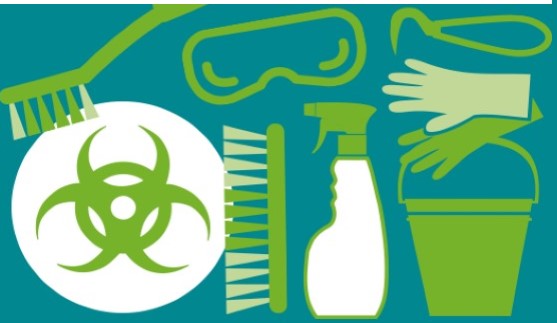List of Biosecurity Incidents
Biosecurity incidents are impacting the world on a regular basis, most recently caused by people flouting laws and regulations. Here we look at some of the biosecurity incidents of the last 50 years.
Mycoplasma bovis in New Zealand
Mycoplasma bovis is a bacterial disease found in cattle in every major dairying country in the world except Norway and until 2018, New Zealand. In May the New Zealand government announced that an attempt would be made to eradicate M. bovis at a cost of USD886 million over 10 years, involving the culling of more than 150,000 cattle.

Dr “X”
In 1966, Argentinan born Dr. Mario Jascalevich from New Jersey USA was accused of poisoning five patients with a plant-derived poison called tubocurarine. He was indicted in 1976 and acquitted in 1978 after a 34-week trial. Some still claim that he killed up to 40 patients at the hospital where he was chief surgeon. While Jascalevich's surgical patients routinely survived, those of a new surgeon were dying at a significantly high rate. This new surgeon, together with directors of the hospital, opened Jascalevich's locker and found 18 near empty vials of curare, a powerful muscle relaxant that could cause death.
Mitsuru Suzuki
One of the most striking examples of food borne biosecurity incidents occurred in Japan between 1964 and 1966. Mitsuru Suzuki allegedly contaminated food, medications, barium contrast and a tongue depressor with Salmonella typhi on many occasions, leading to 120 cases of infection and four deaths. Suzuki was allegedly motivated by his dissatisfaction with the medical training system and a desire to further his research on typhoid fever.
2001 anthrax attacks
In 2001, letters were mailed containing anthrax spores to several news media offices and to US senators, killing five people and infecting 17 others. Bruce Edwards Ivns was the prime suspect but committed suicide during investigations. The FBI allege that by launching these attacks, Ivins created a situation whereby he could save his anthrax vaccine programme, which had been failing.
Sarin attack, Tokyo underground
A Sarin attack by the Aum Shinrikyo doomsday cult on the Tokyo underground killed 13 people and injured thousands more. It was Japan’s worst terror incident. Shoko Asahara and his followers were also accused of several other murders and an earlier Sarin gas attack in 1994 which killed eight and left 600 injured. Seven members of the cult were executed in the summer of 2018 for their part in the attacks.
Chemical weapons, Syria
In 2013 the government of President Bashar al-Assad agreed to destroy Syria’s chemical weapons stockpile after an attack in a rebel-controlled suburb of Syria’s capital, Damascus, with chemical weapons which killed more than 1,400 people. More recent attacks are believed to be a mix of toxic nerve agent sarin and other components including chlorine which have continued into 2018.
The discovery of Al Qaeda laboratories in Afghanistan also demonstrates an effort to harness modern technology for malicious purposes, so the possibility of a major bioterrorist attack is likely to remain.




